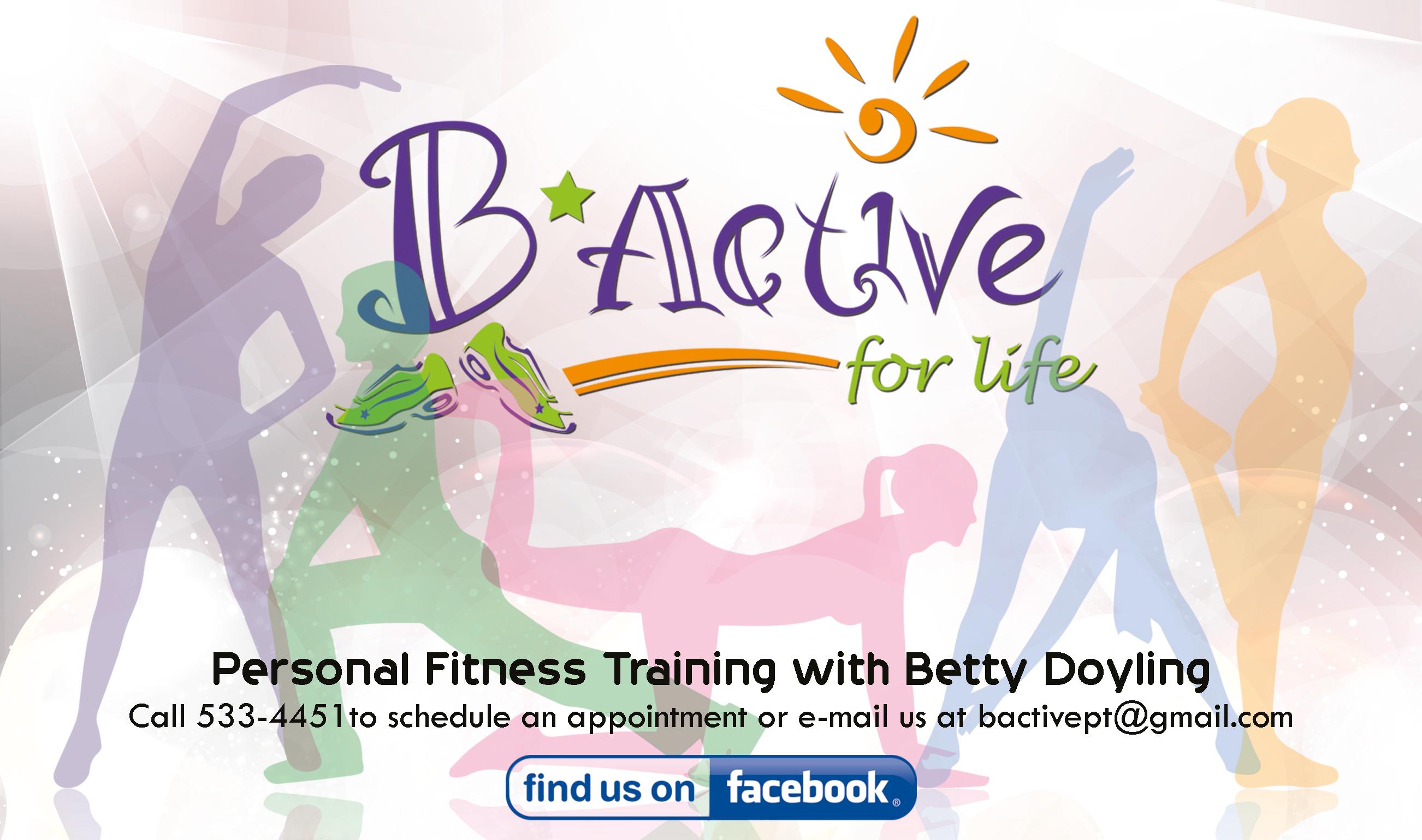
2 minute read
Health & Fitness with Betty Doyling
Exercise Recovery
Exercise can be painful! If you’ve ever done a really tough leg work-out, you know what I’m talking about. Your muscles take a beating when you put your body through a tough workout. To make things worse, it’s impossible to escape the pain after your workout. A day or two later those 10 sets of squats will come back to haunt you. Think you can walk up the stairs or sit on the toilet? Think again! The recovery process can take a few days, and sometimes hurts so bad you can’t even think about going to the gym the next day. However, there are things you can do before, during, and after your workout to speed up your recovery process and make it a little more bearable.
Advertisement
Warm-up
To prepare your body for a tough workout, warm-up properly, jog on the treadmill, crank out a few sets of bodyweight exercises, or if you live close enough, walk to the gym instead of driving. A good warm-up adds just 10 minutes to your workout and will pay off ‘bigtime’ when you’re more comfortable the next day. If it’s a heavy lifting day, warm up with lighter weights first on those exercises. Work your joints through a full range of motion, to get some blood flowing.
Hydrate
Try out these tips to help you bounce back a lot faster. Your hydration plan should be twofold: First, sip water throughout your workout session. Second, keep drinking even after you work out. Dehydration can cause symptoms like fatigue, headaches, and dizziness. Research shows that dehydration also increases symptoms of delayed-onset muscle soreness (DOMS). Speed up your recovery and drink!
If there’s ever a time to treat yourself to a massage, it’s after a tough training session. A rubdown can reduce feelings of DOMS by a whopping 30 percent. Some local therapists are covered by your insurance as well.
If professional massages aren’t in your budget, self-myofascial release (SMR) is a cheaper and equally effective alternative. The technique involves using a firm object such as a foam roller or rubber ball to apply pressure to your muscles. This can be used before and after your workout.
Fuel
It is particularly important to eat carbs and protein after your workout session. After your workout, your body tries to rebuild its glycogen stores and repair and regrow those muscle proteins. Eating the right nutrients soon after you exercise can help your body get this done faster. Doing this helps your body decrease muscle protein breakdown and enhances muscle growth. Make sleep a priority. If you don’t prioritize catching z’s, everything from your performance to your mood can suffer, which may ruin your next workout. Try to get 7-9 hours of shut eye per night. If you’ve just finished a particularly challenging session, try to hit the higher end of that range. To make getting to sleep and staying asleep easier, invest in a good mattress and buy quality pillows and sheets.
Keep moving
When you can barely walk upstairs without cringing, the last thing you probably feel like doing is exercising but do it anyway. Exercising immediately after a tough workout temporarily alleviates symptoms of delayed-onset muscle soreness. Go for a walk, do yoga, or go for a bike ride on your off days! You’ll recover faster and get back to the activities you love. Speed up your recovery and B-Active For Life!








